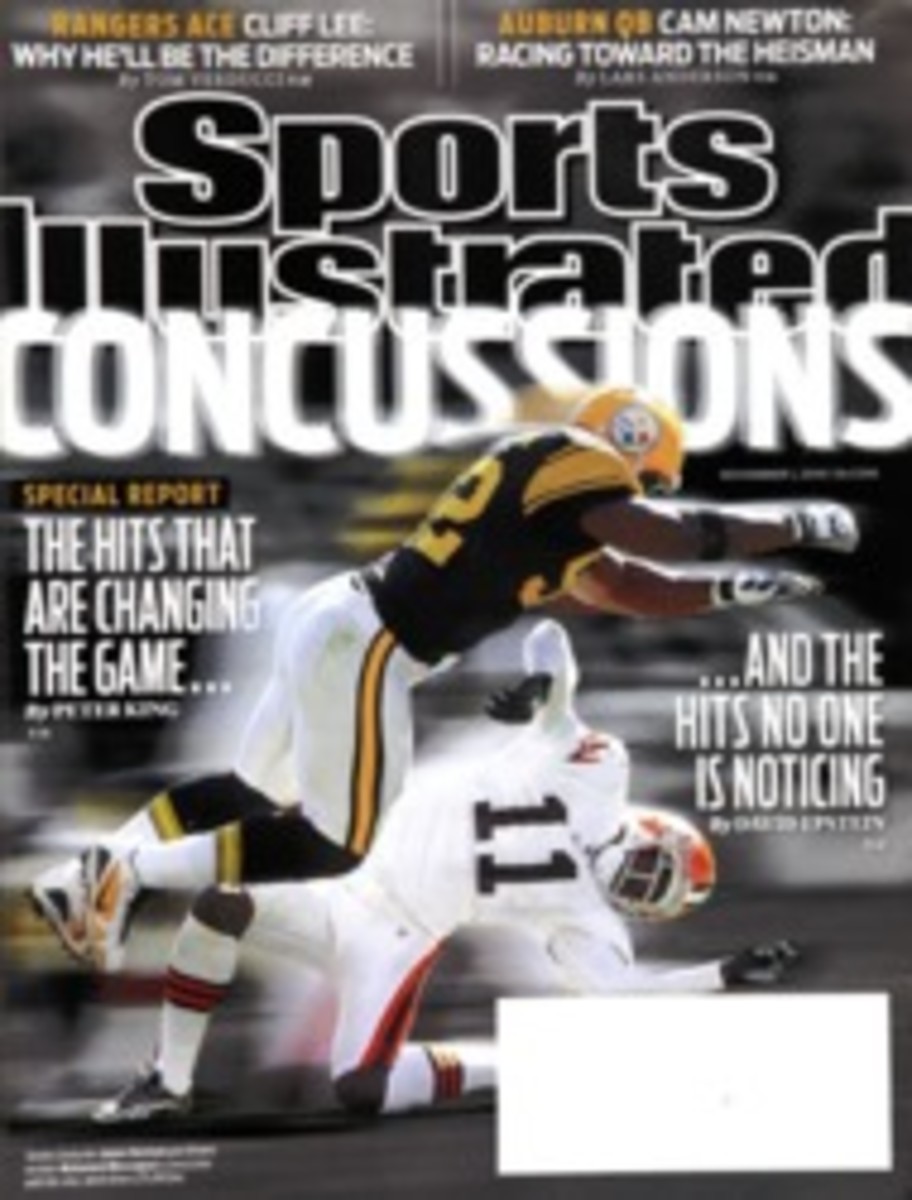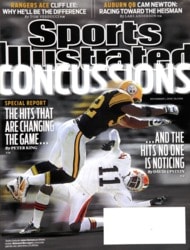
EARLY WARNING
IN MIKE SINGLETARY'S first training camp as 49ers coach, he used the hitting drill called nutcrackers to set a tone of physicality. For the Harlem Jets, the youth football organization for which I'm a defensive coordinator, nutcrackers is also one of the coaches' favorite drills. In our version two kids lie on their backs between two rows of teammates. When a coach blows the whistle, both players scramble to their feet, taking turns as ballcarrier or tackler. The drill is meant to teach speed and technique—and to weed out bad habits. The boys are told to lead with their shoulders and to keep their heads up through contact. Not a practice goes by that a coach doesn't stop the nutcrackers drill to correct a player for hitting with his head down.
I admit that as a defensive coach nothing excites me more than seeing one of my players deliver a big hit. When I tell my players, "I want to hear some football," they know I want them to raise the intensity. That might seem a primal way of cultivating toughness in an 11-year-old kid, but football is a violent and emotional game. Yet I realize I'm coaching at a time when the sport is being scrutinized as it hasn't been since Theodore Roosevelt contemplated banning football in 1905, a year when 18 players died from hits on the field. I have to balance my desire to produce little Ray Lewises or James Harrisons with my ultimate responsibility: ensuring the safety of these 10- to 12-year-olds.
In practical terms the best way to keep our kids safe is by teaching proper technique and making sure that they have effective equipment. Each year the Jets organization (which operates under the auspices of American Youth Football) ships its helmets to the Riddell company to be reconditioned and recertified under national guidelines.
Parents can help too. In the spring Erik Baker had his son, Jackson, 12, undergo the baseline cognitive testing that has become widespread at higher levels. "I wanted to make sure that if Jackson took a blow to the head, we wouldn't let him play again until he scored within the normal range of his preconcussive state," says Baker. "I know the risks, but to let him play I needed to have this done." Says Allan Ludgate, the father of Lucas, 10, "My concern is whether I know well enough and the coaches know well enough when a kid has had a concussion." At CPR training, coaches received information along those lines and were told to err on the side of caution—take the player out until he can be seen by a health professional.
One parent, however, isn't rattled by the talk of rules changes and safety concerns. "[The NFL has] looked at a few hits, and now they're going to tell a guy who has hit a certain way all his life to stop doing it," says Lamont Edwards, the father of 10-year-old Lamont Jr. "I want my son to learn the fundamentals, but I also want him to play it as a tough, physical game, because that's what separates it from most other sports."
PHOTO
ERICK W. RASCO
TACKLING ISSUES Despite the Jets' training, helmet hits were in evidence last Saturday.

